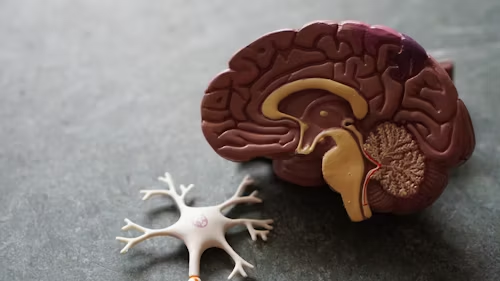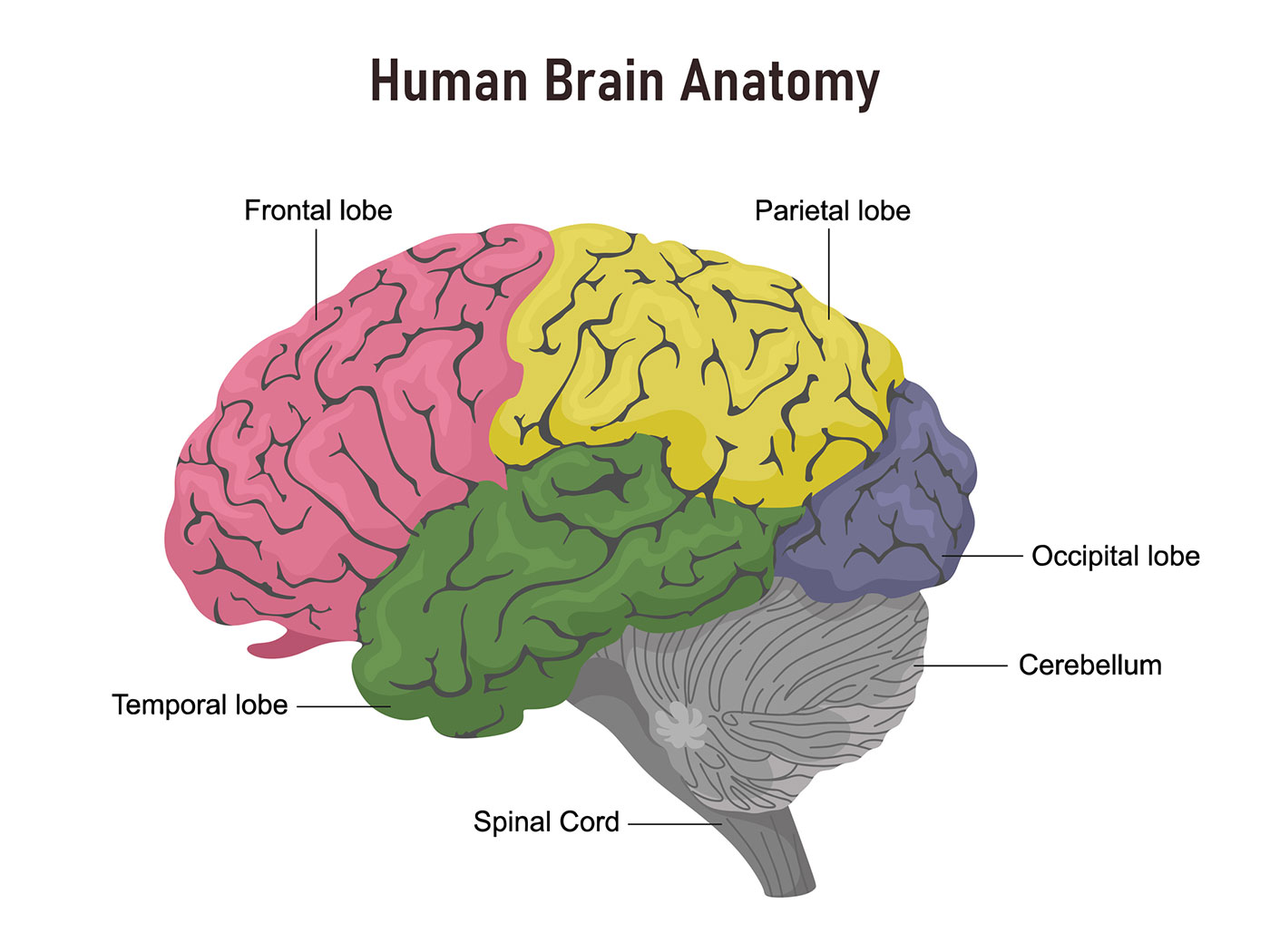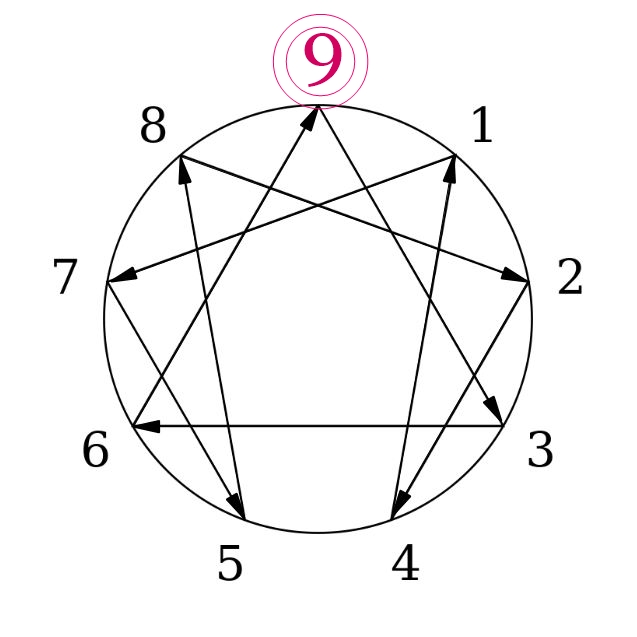The Basic Structure of the Brain

The human brain consists of three main parts: the hindbrain, midbrain, and forebrain. While these parts have different functions, they work together as a single organ to perform their tasks.
Hindbrain
The hindbrain comprises the medulla, cerebellum, and pons, each with vital functions for sustaining life.
- Medulla (Bulbus or Medulla Oblongata): Located at the point where the spinal cord joins the brain, the medulla controls the autonomic nervous system, regulating functions such as heartbeat, respiration, and blood pressure. It also assists in maintaining an upright posture and contains nerve fibers that cross over to connect the brain's right side to the body's left side and vice versa.
- Cerebellum: Situated just behind the brainstem, the cerebellum is a convoluted structure composed of white matter internally and gray matter externally. It coordinates all voluntary and involuntary muscle movements, integrating sensory information from sensory organs and motor commands from the cerebral cortex.
- Pons: Also known as the bridge, the pons connects the two lobes of the cerebellum and serves as a bridge between the brain and cerebellum. It contains regions related to respiration.
Midbrain
Smaller in size compared to the hindbrain and forebrain, the midbrain houses neurons responsible for vision and hearing processes.
- Brainstem: Consisting of the midbrain, pons, and medulla, the brainstem is attached to the central centers of the brain. It controls all internal organs, has connections with the autonomic nervous system, and regulates reflexes. Damage to this region can lead to cessation of heart and respiratory functions.
- Reticular Formation: Extending from the brainstem to the thalamus, the reticular system is a neural network that plays a vital role in controlling overall arousal and consciousness.
Forebrain
The forebrain, comprising the thalamus, hypothalamus, limbic system, and cerebral cortex, is more complex than the hindbrain and midbrain.
- Thalamus: Located within the brain hemispheres, above the brainstem, the thalamus consists of clusters of nerve cell bodies. It receives various sensory inputs and processes them before relaying them to the cortex. The thalamus acts as a gateway for all sensory information except smell.
- Hypothalamus: Comprising about one-third of the brain's volume, the hypothalamus sits between the thalamus and the pituitary gland. It serves as the most sensitive part of the central nervous system, regulating numerous bodily functions such as hunger, thirst, body temperature, sleep, and sexual behavior. Additionally, it controls the pituitary gland.
- Limbic System: Positioned above the brainstem, the limbic system is a network of neurons responsible for olfaction, regulating feeding behavior, creating emotional responses and behaviors, and managing fight-or-flight responses. Components like the amygdala and hippocampus play crucial roles in learned behaviors, emotional responses, and memory formation.
- Cerebral Cortex: The cortex covers the outer surface of the cerebral hemispheres and increases in complexity as the brain develops. It serves as the center for higher mental functions, including perception, reasoning, language, creativity, and conscious thought. It integrates sensory information from all senses to produce meaningful perceptions and experiences.





